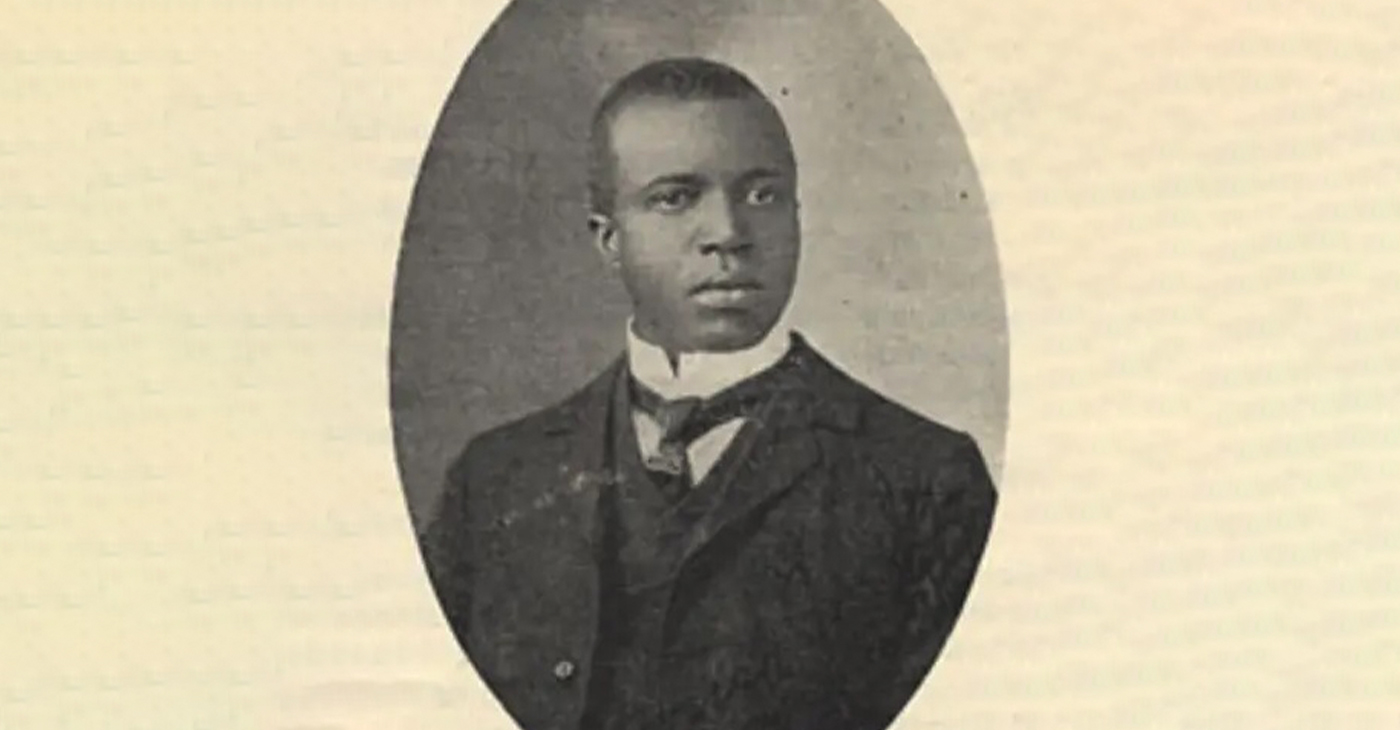Black History
Ragtime Royalty: The Musical Journey of Scott Joplin
Scott Joplin, a pioneering figure in American music, is best known for his significant contributions to the development of ragtime. Born sometime between 1867 and 1868 in Texarkana, Texas, Joplin’s life journey took him from a humble beginning to becoming a celebrated composer and pianist.

By Tamara Shiloh
Scott Joplin, a pioneering figure in American music, is best known for his significant contributions to the development of ragtime. Born sometime between 1867 and 1868 in Texarkana, Texas, Joplin’s life journey took him from a humble beginning to becoming a celebrated composer and pianist.
Joplin’s early exposure to music came from his family, particularly his mother, who played the banjo and encouraged his musical pursuits. He showed remarkable talent at a young age, and his aptitude for the piano soon became evident. Despite facing financial challenges, Joplin’s passion for music led him to teach himself the intricacies of musical composition and notation.
His breakthrough came in the late 1890s with the composition of the “Maple Leaf Rag,” a ragtime piece that would become his signature work. Released in 1899, the “Maple Leaf Rag” gained immense popularity and is considered one of the most significant compositions in the history of ragtime. This piece not only showcased Joplin’s mastery of syncopated rhythms but also marked a turning point in the recognition of ragtime as a legitimate genre.
Joplin’s compositions were characterized by their intricate melodies and the fusion of African rhythms with European musical forms. His music was a blend of catchy, syncopated rhythms and melodic complexity, appealing to a wide range of audiences. Alongside the “Maple Leaf Rag,” his compositions like “The Entertainer” and “Elite Syncopations” further solidified his reputation as a leading figure in ragtime music.
Beyond his compositions, Joplin aimed to elevate the status of ragtime by publishing “The School of Ragtime,” an instructional manual that provided aspiring musicians with a comprehensive guide to playing and understanding ragtime music. This book not only emphasized the technical aspects of playing but also the importance of preserving the art form’s integrity.
However, Joplin’s journey was not without challenges. He faced racial prejudice and financial struggles throughout his life. Despite his immense talent and contributions, he struggled to secure consistent financial success from his music. Yet, he remained committed to his craft, continuing to compose and perform.
Tragically, Joplin’s life was cut short by illness. He passed away on April 1, 1917, at the age of 49. While he didn’t witness the full extent of his influence, his legacy lived on. His compositions and their impact on the world of music continued to resonate through the years, influencing later generations of musicians.
Activism
Oakland Post: Week of April 24 – 30, 2024
The printed Weekly Edition of the Oakland Post: Week of April 24 – 30, 2024

To enlarge your view of this issue, use the slider, magnifying glass icon or full page icon in the lower right corner of the browser window. ![]()
Activism
Oakland Post: Week of April 17 – 23, 2024
The printed Weekly Edition of the Oakland Post: Week of April 17 – 23, 2024

To enlarge your view of this issue, use the slider, magnifying glass icon or full page icon in the lower right corner of the browser window. ![]()
Black History
Matthew Henson: Explorer Extraordinaire
Matthew Henson, a trailblazing explorer who overcame countless obstacles to leave an incredible mark on history. Born on August 8, 1866, in Charles County, Maryland, his journey is a testament to the power of determination and the spirit of adventure.

By Tamara Shiloh
Matthew Henson, a trailblazing explorer who overcame countless obstacles to leave an incredible mark on history. Born on August 8, 1866, in Charles County, Maryland, his journey is a testament to the power of determination and the spirit of adventure.
Henson’s life began amidst the backdrop of post-Civil War America, where opportunities for African Americans were scarce. From a young age, he possessed an insatiable curiosity about the world beyond his small town. At the age of 12, he embarked on a journey that would change the course of his life forever when he joined a merchant ship as a cabin boy.
His most famous expedition was his journey to the Arctic with renowned explorer Robert E. Peary. In 1887, Henson joined Peary’s crew as a seaman and quickly proved himself to be invaluable with his skills as a navigator and craftsman. Over the course of several expeditions, Matthew endured extreme cold, treacherous terrain, and grueling conditions as he and Peary sought to reach the elusive North Pole.
In 1908–09, Peary set out on his eighth attempt to reach the North Pole. It was a big expedition, with Peary planning to leave supplies along the way. When he and Henson boarded their ship, the Roosevelt, leaving Greenland on August 18, 1909, they were joined by a large group. This included 22 Inuit men, 17 Inuit women, 10 children, 246 dogs, 70 tons of whale meat, blubber from 50 walruses, hunting gear, and tons of coal.
In February, Henson and Peary left their anchored ship at Ellesmere Island’s Cape Sheridan, along with the Inuit men and 130 dogs. They worked together to set up a trail and supplies along the way to the Pole.
Peary picked Henson and four Inuit people to join him in the final push to the Pole. However, before they reached their destination, Peary couldn’t walk anymore and had to ride in a dog sled. He sent Henson ahead to scout the way. In a later interview with a newspaper, Henson recalled being in the lead and realizing they had gone too far. The group turned back, and Henson noticed his footprints helped guide them to their destination. At that location, Henson planted the American flag.
Henson’s legacy extends far beyond his expeditions to the Arctic. He shattered racial barriers in the world of exploration and inspired countless individuals, regardless of race, to dream big and pursue their passions. In 1937, he was finally recognized for his achievements when he was inducted into The Explorers Club, an organization dedicated to promoting scientific exploration and field research.
Matthew Henson died in the Bronx, New York, on March 9, 1955, at the age of 88.
-

 Community2 weeks ago
Community2 weeks agoFinancial Assistance Bill for Descendants of Enslaved Persons to Help Them Purchase, Own, or Maintain a Home
-

 Activism3 weeks ago
Activism3 weeks agoOakland Post: Week of April 3 – 6, 2024
-

 Business2 weeks ago
Business2 weeks agoV.P. Kamala Harris: Americans With Criminal Records Will Soon Be Eligible for SBA Loans
-

 Community2 weeks ago
Community2 weeks agoAG Bonta Says Oakland School Leaders Should Comply with State Laws to Avoid ‘Disparate Harm’ When Closing or Merging Schools
-

 Activism2 weeks ago
Activism2 weeks agoOakland Post: Week of April 10 – 16, 2024
-

 Community1 week ago
Community1 week agoOakland WNBA Player to be Inducted Into Hall of Fame
-

 Community2 weeks ago
Community2 weeks agoThe Year Ahead: Assembly Speaker Rivas Discusses Priorities, Problems
-

 City Government2 weeks ago
City Government2 weeks agoLAO Releases Report on Racial and Ethnic Disparities in California Child Welfare System

























































